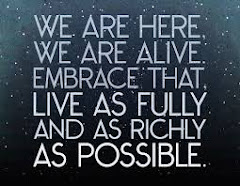Many of the cartoons are crude and vulgar, not exactly for coffee table books.
Some of the caricatures exaggerate so-called racial characteristics to such an outrageous degree that they are shocking. Which is the point of caricature. But are they actually racist?
As this is an anti-racist site, this is an important question.
The best comments on this subject I found on a blog called Wright is Might written by a Briton currently located in Busan, South Korea.
Here is one of his comments:
Wright continues:
As this is an anti-racist site, this is an important question.
The best comments on this subject I found on a blog called Wright is Might written by a Briton currently located in Busan, South Korea.
Here is one of his comments:
Critics have cited a CH cartoon portraying black minister for justice Christiane Taubira as a monkey, as exhaustive evidence for the newspapers racism. As it is a satirical outlet, it should be evident that the cartoon is an amplification of someone else’s views, in order to bring them under scrutiny, and not the illustrator’s own.
In this case, it is a reaction to a member of the french far right- wing party Front National, Anne-Sophie Leclere, who compared Taubira to a monkey on her Facebook page and on television. The cartoon is designed to disgust and shock, through triggering an immediate raw response in a way written reporting cannot. However, this response should of course be directed at the racist views of Leclere and not at the outlet parading them for ridicule. A UK analogue might be the ‘UKIK’ app created by students, where you play ‘Nicolas Fromage’, and boot immigrants off the cliffs of Dover. The craftsmanship makes a mockery of extremist views, it does not endorse them.
So the cartoons are mocking extremist far-right views, in this case racist views, caricaturing them to a ridiculous degree in order to pour scorn upon such racism. Context is all.
Wright continues:
Another image consistently cited on twitter and in articles, is a CH cover depicting pregnant women shouting “leave our welfare checks alone!”, accompanied by the caption ‘Boko Haram sex slaves are angry’. Again, many have taken this in the first degree and denounced the newspaper as sexist and xenophobic; Kitty Stryker remarks that CH is “making fun of raped girls as welfare check grabbers”.The illustrators of Charlie Hebdo were expecting their work to be viewed in the context of the news current at the time and by an audience able to understand the deliberate exaggerations that are making subtle but telling points. Speed and fury are evident in every mocking line.
The illustration is actually the amalgamation of two unrelated stories that were in the news at the same time; the French government cutting by half the amount of maternity leave mothers can take, and Boko Haram abducting hundreds of girls who are likely being used as sex slaves. As with the UK the notion of the ‘benefit sponge’ is ripe in France, and the image was, on the contrary, trying to suggest that immigrant women, who are in dire need of benefits, are actually much more likely to be effected by the patriarchal new laws than manipulative ‘welfare queens’. Thus the illustration is in fact, not only making a feminist statement, but also sneering at both establishment policy and the anti- immigration Front National, whilst simultaneously substantiating the now horrific conditions of Nigerian schoolgirls, through the smooth blend of two topical stories.
Making subtle telling points by gross exaggeration is, after all, the stock in trade of political cartoonists.
That's the trouble with sarcasm. People are too liable to misunderstand and take it literally and at face value, without context and without thinking any further than the startling presentation.
That's the trouble with satire. Some people just don't get it.


No comments:
Post a Comment